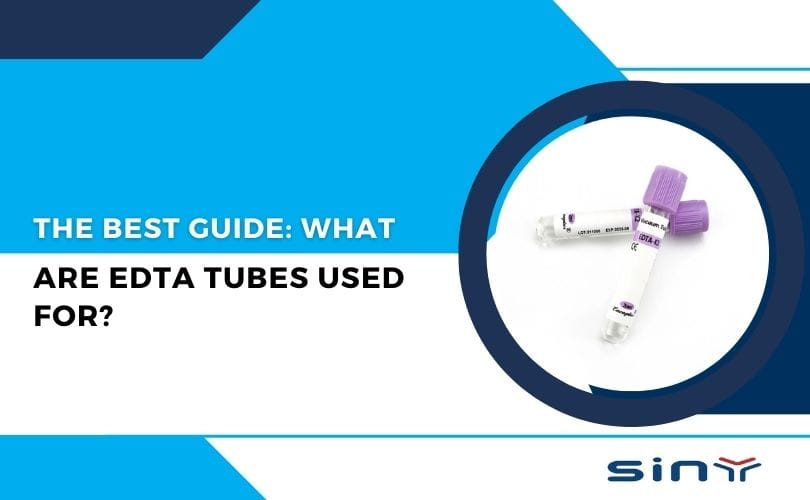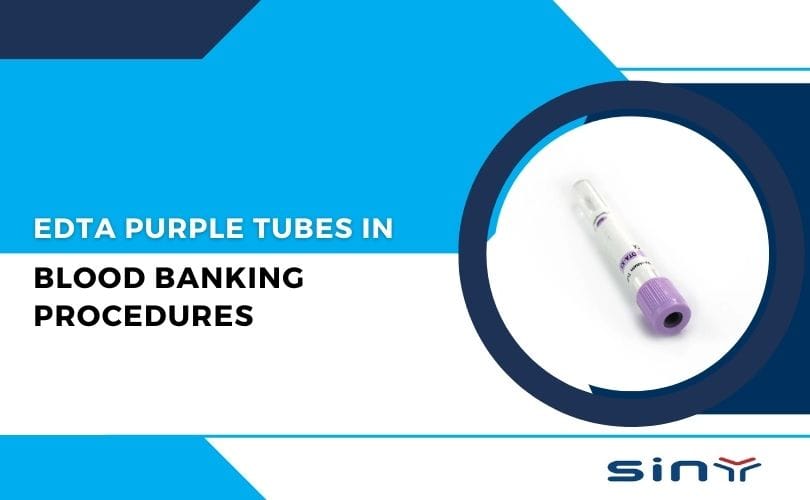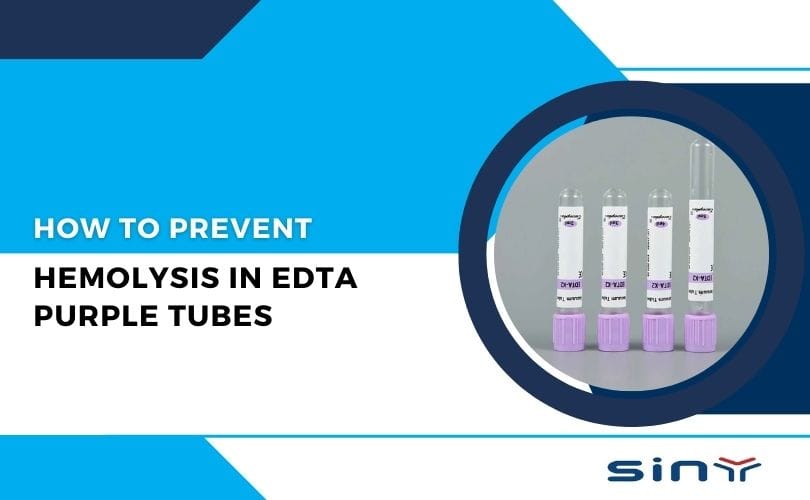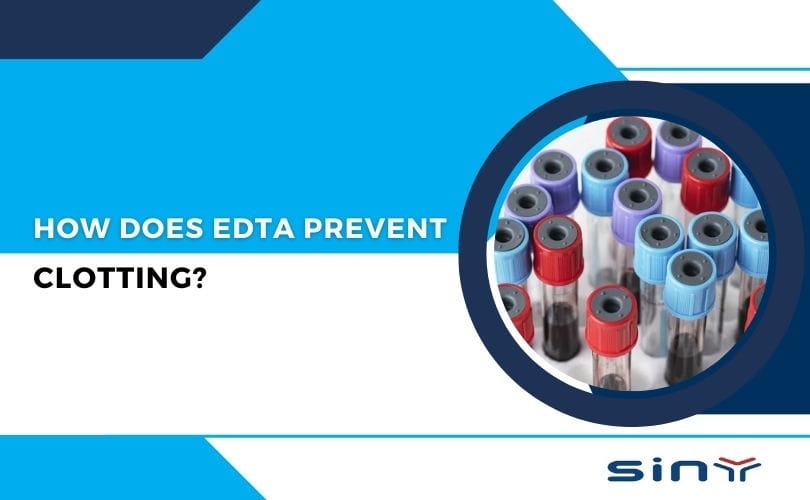EDTA tubes are an essential tool in modern medical and research laboratories. These tubes, often recognized by their lavender or purple caps, are designed to collect and preserve blood samples for a variety of tests. Understanding their purpose, types, and proper usage is key to ensuring accurate laboratory results. In this comprehensive guide, we’ll explore everything you need to know about EDTA tubes, from their composition to their applications, and how to choose the right product for your needs.
What Are EDTA Tubes?
EDTA tubes are evacuated blood collection tubes that contain ethylenediaminetetraacetic acid (EDTA) as an anticoagulant. EDTA works by binding calcium ions in the blood, which prevents clotting and preserves the integrity of blood cells. This makes EDTA tubes ideal for tests that require whole blood analysis, such as complete blood counts (CBCs), blood typing, and molecular diagnostics.
These tubes are widely used in clinical and research settings because they maintain the cellular and molecular structure of blood samples, ensuring reliable test results. If you’re looking for high-quality EDTA tubes, visit our EDTA Tubes product page for a wide selection.
What EDTA Tubes Are and How They Work
EDTA tubes—commonly called purple-top tubes—are sterile vacuum blood collection tubes containing ethylenediaminetetraacetic acid (EDTA). The EDTA stops blood from clotting by binding calcium, a mineral needed for the body’s natural clotting process.
You can explore EDTA tube products directly at EDTA Tube Collection – edtatube.com
How EDTA Works Inside the Tube
Inside every EDTA tube is a specific amount of K2EDTA or K3EDTA. When blood enters the tube:
EDTA begins binding calcium ions immediately.
This process stops the clotting cascade.
The blood remains fluid and suitable for testing.
Cell shapes stay preserved, which is essential for counting and morphology.
EDTA is widely considered one of the most stable anticoagulants for preserving whole blood cell integrity.
Types of EDTA Tubes
Different laboratories use different EDTA tube formats depending on their analyzer requirements. All tubes rely on the same chelating principle, but their additives and concentration levels vary.
K2EDTA Tubes
K2EDTA is typically spray-coated, meaning the anticoagulant is applied as a thin, dry layer inside the tube.
Benefits:
Helps maintain red blood cell shape
Produces stable platelet counts
Works well with automated analyzers
The most commonly used form worldwide
These tubes are often used for standard hematology and can be found here: Purple Top Blood Collection Tube – edtatube.com
K3EDTA Tubes
K3EDTA is usually added in liquid form, though some manufacturers also offer powder versions.
Used for:
Older hematology systems
Certain molecular workflows
Specialized setups where liquid additives are preferred
Learn more about product variations at EDTA Tube Products – edtatube.com
Differences Between K2 and K3 EDTA
| Feature | K2EDTA | K3EDTA |
|---|---|---|
| Additive Form | Spray-coated | Liquid or powder |
| Effect on RBC Size | Minimal | May cause slight cell shrinkage |
| Lab Preference | Modern analyzers | Limited specialized use |
EDTA Tube Additives and Concentration
Each tube contains a precise concentration of EDTA to ensure proper anticoagulation.
Why Concentration Matters
If an EDTA tube is underfilled:
The EDTA-to-blood ratio becomes too high
Cells may shrink
Platelet counts may appear falsely elevated
If a tube is overfilled:
There may not be enough EDTA to prevent clotting
Microclots can form
CBC results may be unreliable
To prevent such issues, explore quality-controlled options at Top Quality Control Tips – edtatube.com
What EDTA Tubes Are Used For (Primary Uses)
EDTA tubes are primarily used in hematology and molecular diagnostics. Here are some of the key applications:
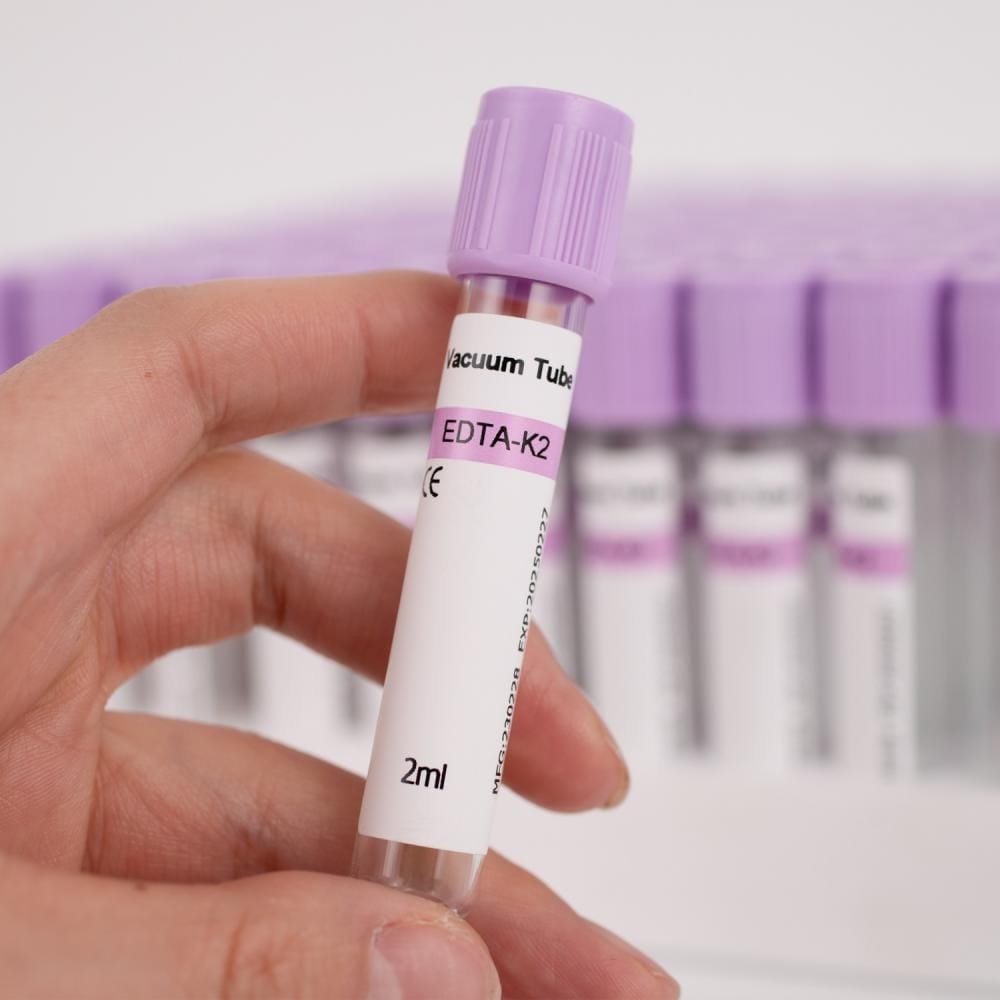
Complete Blood Count (CBC)
One of the most common tests performed in medicine, the CBC, measures:
White blood cells
Red blood cells
Hemoglobin
Hematocrit
Platelets
Learn more about CBC here:
🔗 https://en.wikipedia.org/wiki/Complete_blood_count
WBC Differential
EDTA preserves cell structure, allowing automated analyzers to distinguish neutrophils, eosinophils, basophils, monocytes, and lymphocytes.
Platelet Count
Proper anticoagulation is essential for accurate platelet numbers and function.
Blood Smears
Perfect for microscopic morphology inspections.
Blood Typing
The tube maintains whole blood suitable for ABO/Rh typing.
Molecular Diagnostics
EDTA is gentle on nucleic acids, making it compatible with:
DNA analysis
PCR
Viral load monitoring
Genetic testing
Hemoglobin A1c (HbA1c)
Many labs run HbA1c using whole blood collected in EDTA.
For more information on how to use EDTA tubes effectively, visit our guide on What Is an EDTA Tube and How Do I Use It?.
EDTA Tube Used for Which Test? (Detailed Breakdown)
| Test Type | Requires EDTA? | Reason |
|---|---|---|
| CBC | Yes | Preserves cell morphology |
| WBC Differential | Yes | Prevents clots & distortion |
| Platelet Count | Yes | Accurate platelet analysis |
| ESR (in some regions) | Sometimes | Some labs use EDTA for ESR |
| HbA1c | Yes | Whole blood analysis |
| PCR & DNA | Yes | EDTA protects DNA integrity |
| Coagulation Tests (PT, APTT) | No | EDTA binds calcium and interferes |
| Chemistry Tests | No | EDTA affects enzymes & ions |
Blood Collection Workflow With EDTA Tubes
1. Order of Draw
EDTA tubes should be filled after coagulation tubes to prevent additive carryover.
2. Mixing
EDTA tubes must be gently inverted 8–10 times.
Shaking the tube may cause hemolysis.
Under-mixing may allow microclots to form.
More mixing guidance is available at Prevent Hemolysis in EDTA Tubes – edtatube.com
3. Storage
Whole blood in EDTA remains stable for several hours at room temperature, depending on the test.
4. Smear Preparation
For morphology, smears should be made soon after collection.
5. Analyzer Compatibility
Always confirm whether your analyzer requires K2 or K3 EDTA.
Choosing the Right EDTA Tube
A good-quality EDTA tube isn’t chosen only by cap color. Several hidden factors matter.
1. Vacuum Accuracy
The internal vacuum determines how much blood enters the tube.
2. Additive Stability
Spray-coated additives offer consistent anticoagulation.
3. Tube Material
PET plastic is commonly used for safety and durability.
4. Manufacturing Quality
ISO-certified production ensures consistency.
You can explore reliable tube options here: https://www.edtatube.com/
5. Supplier Reliability
A reliable supplier offers stable stock availability, detailed documentation, and predictable shipping schedules.
If you need assistance or samples: Contact Us – edtatube.com.
Common Pitfalls and Best Practices
Common Mistakes:
- Using the wrong tube type for specific tests.
- Improper mixing, leading to microclots or hemolysis.
- Delays in processing, which can compromise sample integrity.
Best Practices:
- Conduct acceptance QC tests when switching suppliers.
- Train staff on proper collection and handling techniques.
- Maintain a list of approved vendors with documented performance metrics.
For more quality control tips, visit our guide on Top Quality Control Tips for Using EDTA Tubes.
Summary
EDTA tubes play an essential role in blood testing thanks to their ability to prevent clotting and maintain cell integrity. Whether you’re performing CBCs, preparing blood smears, analyzing platelet counts, or running DNA procedures, EDTA tubes provide stability and accuracy that laboratories depend on.
Understanding EDTA types, tube sizes, concentration, vacuum accuracy, and mixing guidelines helps both clinicians and procurement teams choose the right product.
FAQs
Q1: Are EDTA tubes interchangeable across all hematology analyzers?
Not always. Many analyzers are validated for specific EDTA forms or tube volumes. Always check the manufacturer’s guidelines.
Q2: How long is EDTA whole blood stable?
Stability varies by test type and storage conditions. For most hematology tests, timely analysis is recommended.
Q3: Does EDTA interfere with biochemical tests?
Yes. EDTA binds divalent cations, which can disrupt assays requiring calcium or magnesium.
Q4: How do I choose between K2 and K3 EDTA?
K2 EDTA is preferred for most modern analyzers due to better cellular preservation. Verify compatibility with your instrument.
Q5: What quality documents should a supplier provide?
Look for Certificates of Analysis, sterility documentation, vacuum test results, and traceability details.

